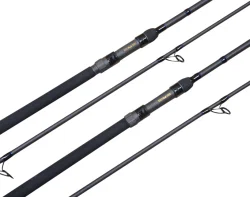Essential Fishing Tackle for Beginners: What You Need to Get Started
2024-09-02
Fishing is a relaxing and rewarding hobby, but getting started can be overwhelming with the wide array of fishing tackle available. As a beginner, it’s essential to understand the basics of fishing tackle and how to choose the right gear for your needs. This guide will help you assemble your first fishing kit, ensuring you're well-equipped for your fishing adventures.
1. Rod and Reel Combo
The first and most important piece of fishing tackle is your rod and reel. For beginners, a spinning rod and reel combo is an excellent choice. It’s versatile, easy to use, and suitable for a wide range of fishing conditions. Look for a medium-action rod around 6 to 7 feet long, which provides a good balance of flexibility and strength. The reel should match the rod’s size and weight, and a pre-spooled reel with 6- to 10-pound test line is ideal for beginners.
2. Fishing Line
While your reel may come pre-spooled with line, it’s essential to understand the different types of fishing lines available:
- Monofilament Line: This is the most common type and is affordable, easy to handle, and versatile. It’s perfect for most freshwater fishing situations.
- Braided Line: Stronger and thinner than monofilament, braided line is excellent for heavy cover or larger fish, but it can be more challenging to handle.
- Fluorocarbon Line: Virtually invisible underwater, this line is ideal for clear water conditions and shy fish.
3. Hooks, Sinkers, and Bobbers
Hooks, sinkers, and bobbers are essential components of your fishing tackle:
- Hooks: Start with a variety pack of hooks in different sizes. Sizes 6 to 10 are good for most freshwater species.
- Sinkers: These weights help your bait sink to the desired depth. Split-shot sinkers are versatile and easy to attach to your line.
- Bobbers: Also known as floats, bobbers keep your bait at a specific depth and signal when a fish bites. Choose small, round bobbers for beginner use.
4. Baits and Lures
Understanding the difference between live bait and artificial lures is crucial:
- Live Bait: Worms, minnows, and crickets are common live baits that attract a wide variety of fish. They are easy to use and highly effective.
- Artificial Lures: These mimic the appearance and movement of prey. Start with a basic selection of soft plastic worms, crankbaits, and spinnerbaits. Each lure type is designed for different fishing conditions and species.
5. Tackle Box
A tackle box is essential for organizing and storing your gear. Look for a box with multiple compartments for hooks, lures, and other small items. A waterproof, portable box with a secure latch is ideal for keeping your tackle safe and organized.
6. Pliers and Clippers
A good pair of pliers is indispensable for removing hooks from fish, bending wires, and crimping sinkers. Additionally, line clippers or a small pair of scissors will help you cut your fishing line quickly and cleanly.
7. Fishing License and Regulations
Before you hit the water, make sure you have a valid fishing license for your area. Familiarize yourself with local fishing regulations, such as size and bag limits, to ensure you’re fishing legally and sustainably.
Conclusion
As a beginner, starting with the right fishing tackle can make your experience more enjoyable and successful. By investing in a quality rod and reel combo, understanding the types of lines and lures, and organizing your gear in a tackle box, you'll be well-prepared for a day on the water. Happy fishing!



